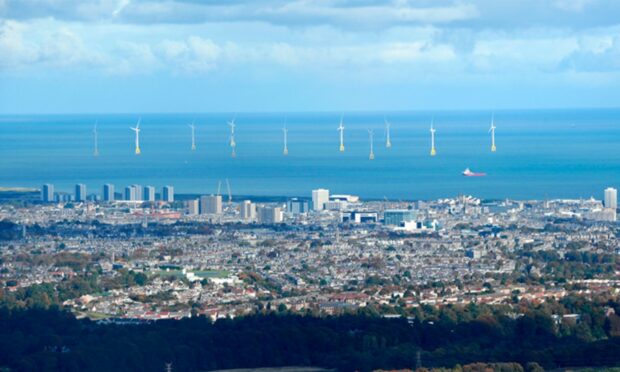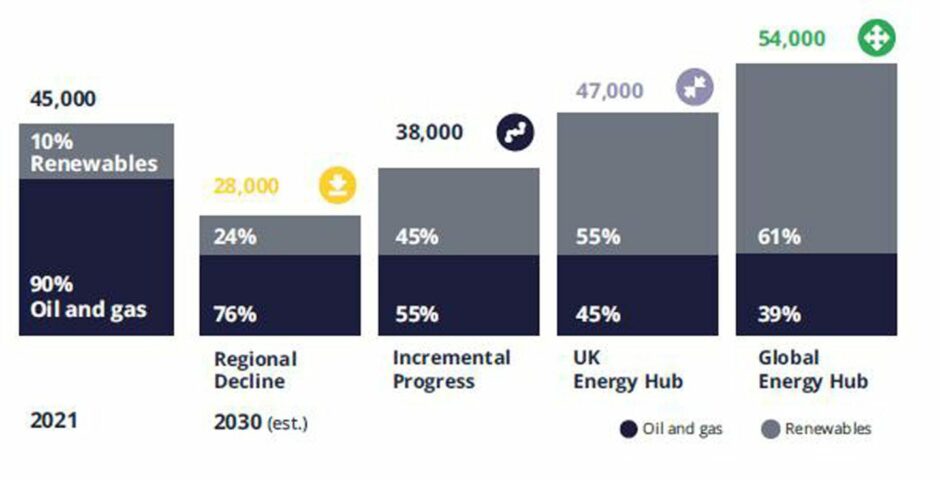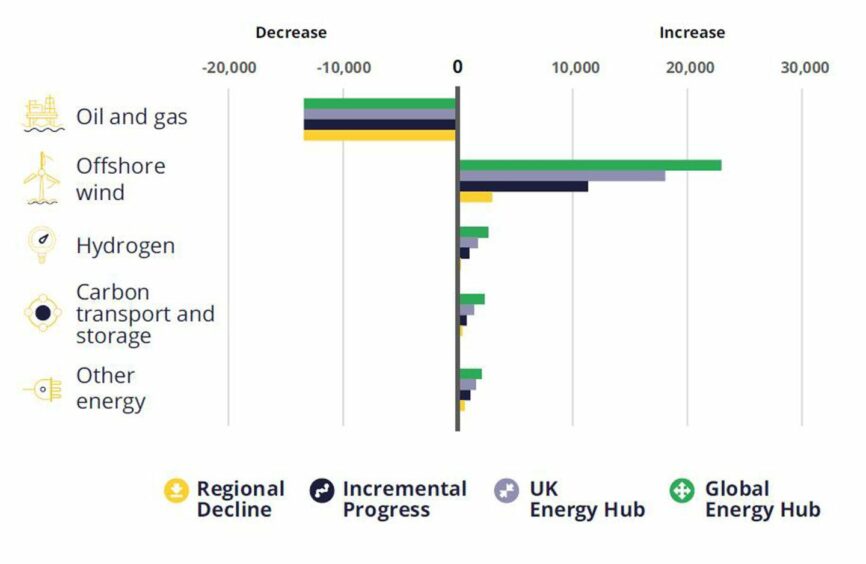Investments worth £17 billion over eight years can bring thousands of new jobs to the north-east and secure the region’s position as a global energy hub.
But a lack of ambition could cost the area up to 17,000 jobs.
These are the two contrasting futures outlined in a new report from Robert Gordon University (RGU) and its Energy Transition Institute (ETI).
The Making the Switch review says “urgent capital investment” is vital for positioning the region as a long-term global leader in offshore energy.
It models four scenarios, ranging from “regional decline” to “global energy hub,” the latter offering the largest rewards, contingent on the most progress and investment.
In this ambitious scenario, garnering £17bn of renewables investment and activity over the next eight years could secure 54,000 direct and indirect jobs in the north-east energy sector in 2030 – up from 45,000 roles today, the report says.
At the other end of the scale, under a less ambitious scenario, up to 17,000 jobs are said to be at risk, with headcount falling by up to 40% to about 28,000 over the same period.
Much of the investment proposed by the report would need to be committed over the next four years to establish new large-scale manufacturing and installation capacity across the region, supporting the ScotWind offshore wind build-out, as well as new hydrogen and carbon capture and storage (CCS) projects.
It would also require the region to capture, develop, execute and operate as much as 18 gigawatts (GW) of installed offshore wind capacity, 3.3GW of hydrogen generation and up to 28 million tonnes of annual CCS, including CO2 imports, in line with the UK’s energy security strategy.
Just transition
In all scenarios, the report suggests nearly 14,000 oil and gas roles may need transitioning to renewables between 2022 and 2030.
This also assumes a “goldilocks zone”, where workforce reductions in one sector are matched by increased activity in another – again reinforcing the need for investment and a consistent stream of projects to ensure a smooth transition.
Previous RGU research suggests that with more than 90% of the existing north-east oil and gas workforce possessing medium to high skills transferability, most people in the region are well-positioned to make the switch.
RGU’s latest report says around 10% – roughly 4,500 people – may have lower transferability and are, therefore, likely be disproportionately impacted by the changes.
“Cost effective and accessible” upskilling and training will be required for up to 10,000 people in the region who have medium or lower skills transferability, the report adds.
In addition, it calls for common certification, standards and accreditation to support upskilling – a demand that has been made repeatedly by unions and campaign groups.
The opportunity of getting this right has the potential to secure the region’s economy as a global energy hub for decades to come.”
Paul de Leeuw, director, the Energy Transition Institute.
ETI director Paul de Leeuw, the report’s lead author, described the findings as “an urgent call to action”.
But he also said the transition represented “a unique opportunity to re-shape a new energy future” based on a legacy of oil and gas expertise.
He pointed to advantages the region already has in its skills base, but said momentum must be preserved to ensure the north-east stays competitive against other areas looking to secure investments in energy transition projects.
Professor de Leeuw added: “The opportunity of getting this right has the potential to secure the region’s economy as a global energy hub for decades to come.
“However, if we move too slowly, there won’t be a role for everyone, and it will risk a hard-hitting economic decline for the north-east. This must be avoided at all costs.”
Future-proofing jobs
Maggie McGinlay, chief executive of ETZ, the company driving forward plans for an Energy Transition Zone in Aberdeen, said the review was “hugely welcome” in highlighting the need for targeted investment and support for the north-east.
She added: “The report is also a timely reminder on what is at stake and the critical role industry, governments, the region and the community have to play to ensure the north-east of Scotland remains a leading energy hub for generations to come.”




Conversation